Navigating the Path to a Least Restrictive Environment
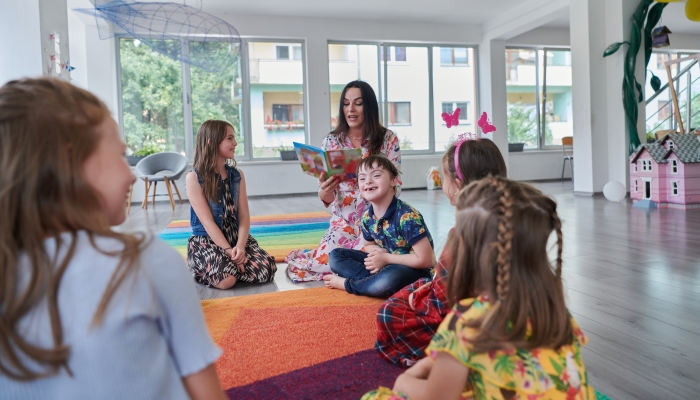
- LRE refers to children with disabilities and their schooling in the least restrictive environment under IDEA, the law which establishes their rights to education.
- LRE is individual for each child and is meant to keep children with disabilities in general education settings to the maximum extent appropriate for their needs.
- In some cases, LRE may result in alternative placements if they are the most appropriate for a child with a disability.
- The implementation of LRE can be inconsistent due to budget, staff, space, and training constraints.
- Parents and caregivers have a right under IDEA to challenge a placement decision and to work with their child’s school to find the best placement.
Knowing your child’s rights under the law is one of the most important ways that parents and caregivers can ensure that their child is receiving the most appropriate education for them.
The world of the IEP (individualized education program) and LRE (least restrictive environment) and the team of professionals that families get to know can seem intimidating when your child starts school or when a learning disability or neurodiversity diagnosis arises.
However, the more you learn about your child’s rights and the processes in place to help them achieve their educational goals, the more confident you will be as an advocate.
If you have concerns about your child’s placement, take a look at how teachers and families can work together to navigate the path to the least restrictive environment.
Understanding LRE in Special Education
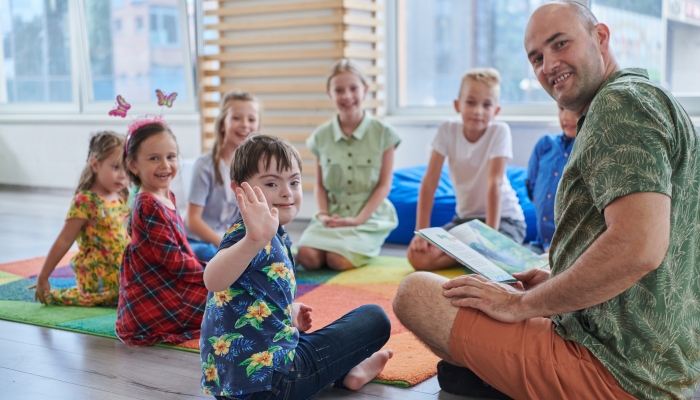
The least restrictive environment, known as LRE, refers to the principle that children with disabilities should be educated alongside their peers in general education settings to the maximum extent possible that still meets their educational needs.
Definition and Legal Basis
LRE was established in the Individuals with Disabilities Education Act11. About IDEA. Individuals with Disabilities Education Act. https://sites.ed.gov/idea/about-idea/#IDEA-History, most commonly called IDEA.
IDEA is the pivotal civil rights legislation that sets out and protects the educational rights of children with disabilities.
The law has two important principles at its heart:
- Children with disabilities are entitled to a free appropriate public education, also known as FAPE.
- Children with disabilities should receive that education in the least restrictive environment possible (or LRE).
LRE should be tailored to each individual student based on their specific educational needs.
Principles of LRE
The main principles underpinning LRE are:
| Inclusivity |
|
| Accessibility |
|
| Maximum exposure to general education settings |
|
The least restrictive environment is also individual. It means that kids with educational needs should be educated in an environment that’s tailored to their goals.
This means that students with disabilities should not be grouped together and placed in a single, one-size-fits-all, special education classroom and separated from their peers in general ed.
LRE also recognizes that all children benefit and learn from each other’s differences when the school community is inclusive.
Evaluating Student Needs
To determine the LRE for an individual child, it is important first to understand their specific educational needs.
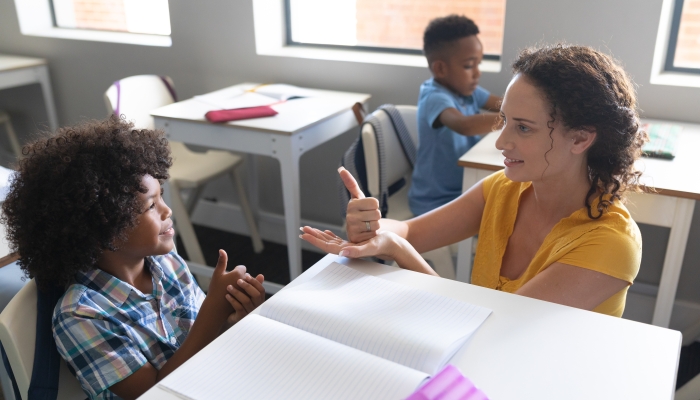
Assessment and Individualization
Each child’s specific needs must be evaluated and assessed to determine what support and accommodations will help them access their education in the least restrictive environment.
The individualized education program22. A Guide to the Individualized Education Program. U.S. Department of Education. 2019. https://www2.ed.gov/parents/needs/speced/iepguide/index.html#closer, or IEP, is the document that establishes the parameters of the least restrictive environment for every child who receives special education services.
An IEP is required under IDEA to ensure that every child is treated as an individual.
To determine what accommodations and classroom resources and environments are most appropriate for an individual child, the school’s IEP team will conduct assessments.
Role of IEP Teams
The IEP team33. Who’s on the IEP team. Understood. https://www.understood.org/articles/whos-on-the-iep-team includes teachers, special education staff, parents, and if appropriate, the student.
Once it’s determined that a child needs special education services, the IEP team will meet to discuss what accommodations need to be made and what resources should be provided. This includes defining the most appropriate LRE settings for that student.
The team will review the IEP on a yearly basis to make sure that the program still suits that student’s needs and to make any necessary adjustments.
LRE Settings and Options
Under IDEA, a child with a disability should remain in the general education classroom to the maximum extent appropriate. Supplementary aids and services should be provided to enable them to stay in that setting. Students should only be removed when their aims cannot be achieved satisfactorily, even with assistance.
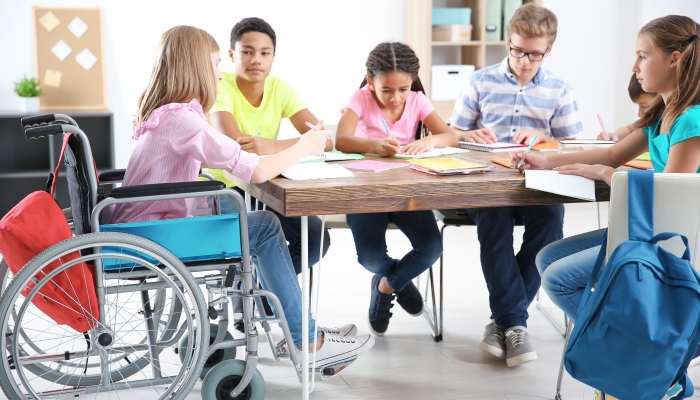
Continuum of Placements
IDEA requires school districts to provide a continuum of alternative placement options44. Least Restrictive Environment (LRE). IRIS Center. https://acrobat.adobe.com/id/urn:aaid:sc:EU:809cc449-c4f3-446a-81f0-ada2c9e63d97 in which a child’s IEP can be implemented.
These alternative placements range from the least restrictive, for example, the general education classroom with some support, to the most restrictive, such as a residential facility.
Each school district should generally be able to provide:
- General education classrooms.
- General education classroom with accommodations and services in the classroom.
- Special education classrooms.
- Special schools.
- Services for homebound students.
- Special residential facilities.
Every child with an IEP will have designated LRE settings to meet their needs, keeping in mind that they should remain in the general ed setting to the maximum extent possible that is beneficial for their education.
For example, for a child with dyslexia, this may mean the child spends most of the day in the general education class but also spends an hour a day in the resource room receiving specialized instruction.
For a child with autism spectrum disorder, this may mean the child’s placement in a combination of settings. For example, they may spend most of their time receiving specialized instruction or related services in a special education classroom, and then go to the general education classroom for specified activities like music or computing.
For some children with complex physical, emotional, or neurodiverse needs, the least restrictive environment may actually involve separate schooling with special classes, residential programs, or hospital programs where they can receive the support and services that they need.
Balancing Integration and Support
Under IDEA, students should not be removed from the regular educational environment unless their educational goals cannot be achieved satisfactorily even with supplementary aids, small group instruction, assistive technology, and other accommodations.
This kind of support may include everything from a child having a one-to-one special education teacher, to a child leaving for part of the day to receive occupational or speech therapy, to providing adapted physical education classes.
It may mean a child is given enlarged text materials for vision impairment while having all of their lessons in a general ed classroom, or something as simple as a student with ADHD having a wobble cushion on their seat.
One of the goals of IDEA is to make the school community as inclusive as possible by maximizing the integration of students with disabilities with their non-disabled peers.
The least restrictive environment is not just a physical setting. It means providing accommodations and supplementary aids and services to students with disabilities to allow them to access the school community and resources to the maximum extent that benefits them.
Challenges in Implementing LRE
Although the provision of education in the least restrictive environment is protected by special education law enshrined in IDEA, the implementation of LRE by individual schools and school districts can be inconsistent.
The benefits of educating students with disabilities in the regular educational environment is well documented; however, in reality, it doesn’t always happen.
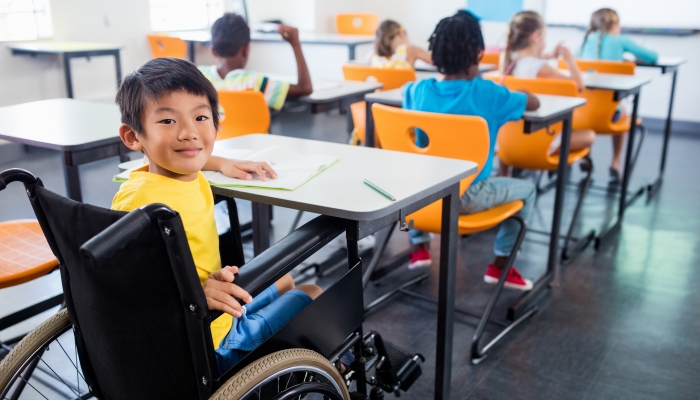
Recognizing Potential Barriers
Common challenges faced by schools and families in the implementation of LRE include:
- Limited school resources and budgets.
- Inadequate training for general education teachers in the inclusion of students with disabilities.
- Limited government funding for special education.
- Resistance from families of non-disabled peers to the inclusion of students with disabilities.
- Distance and transportation to special education services provided outside of school.
A recent study published in Research and Practice for Persons with Severe Disabilities55. Kurth, J. A., Ruppar, A. L., Toews, S. G., McCabe, K. M., McQueston, J. A., & Johnston, R.. Considerations in Placement Decisions for Students With Extensive Support Needs: An Analysis of LRE Statements. Research and Practice for Persons with Severe Disabilities. 2019;44(1), 3–19. https://doi.org/10.1177/1540796918825479 surveyed a sample of IEPs for students with significant disabilities.
They found that, contrary to the principle of LRE of maximum exposure to general ed settings, many students with disabilities were taught in separate special education classes for all but their non-academic subjects.
They also found that instead of detailing the least restrictive environment for students in the IEP, many IEPs contained justifications for why students with disabilities should not be included in a general education setting. The IEPs did not focus on how that setting could be adjusted for them.
Findings such as these indicate that schools which may face limited budgets, have limited staff resources, or not enough teacher training may be struggling to implement LRE in the way intended by IDEA.
Ensuring Compliance and Advocacy
However, parents and caregivers of children with disabilities have a right to challenge a school’s LRE implementation if they feel their child is not fully benefiting from placement decisions.
Procedural safeguards in Subpart E of IDEA66. Subpart E — Subpart E—Procedural Safeguards. Individuals with Disabilities Education Act. 2017. https://sites.ed.gov/idea/regs/c/e detail different actions parents can take if they are concerned about their child’s IEP, including their classroom placement or LRE setting.
Parents and caregivers need to remember that they are also part of the IEP team. They can call an IEP meeting like any member of the team if they have concerns about a placement decision.
Other options for resolving an IEP concern77. Lee, A.. 6 options for resolving an IEP dispute. Understood. https://www.understood.org/articles/6-options-for-resolving-an-iep-dispute include:
- Negotiation with the IEP team.
- Mediation with a neutral mediator.
- Due process hearing.
- Law suit.
- State complaint.
- Civil rights complaint.
Parents and caregivers have the right under IDEA to examine, challenge, and advocate for the best placement decisions for their child to ensure they are in the least restrictive environment to the maximum extent appropriate for their needs.
Collaborative Strategies for Successful LRE Implementation
Although there may be challenges involved, collaboration between families, schools and communities is vital for implementing LRE successfully for every child.
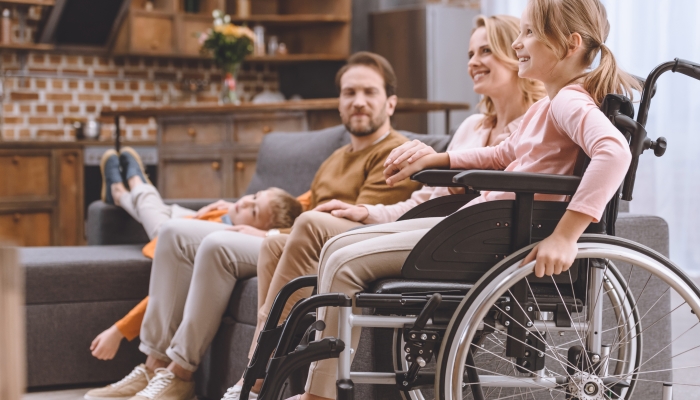
Involving Families and Communities
Parents and caregivers of students with disabilities should feel that they are working with their child’s school and IEP team toward a shared goal, rather than working against each other.
Families can:
- Maintain frequent, respectful, open communication with their child’s teachers.
- Ask for meetings with the IEP team.
- Document things that are going well and things that could go better for more productive discussions and meetings.
- Ask their children about their experiences.
- Learn their rights and their children’s rights and advocate for themselves.
- Share information and resources with other families and community groups.
Professional Development for Educators
Obviously, both general education and special education teachers play a critical role in the implementation of LRE and the creation of inclusive classroom settings.
However, it’s clear that teachers in public schools need the resources, training, and support to implement full inclusion for students with disabilities.
One of the reasons that implementation of LRE is inconsistent is because the federal government has not upheld its obligation under IDEA88. Fulfill the Promise of the Individuals with Disabilities Education Act. National Education Association. https://www.nea.org/advocating-for-change/action-center/take-action/fulfill-promise-individuals-disabilities-education-act to fund 40% of the average per-student cost for every public school student receiving special education.
The IDEA Full Funding Act99. S.2217 – IDEA Full Funding Act. Congress.Gov. 2023. https://www.congress.gov/bill/118th-congress/senate-bill/2217 is currently before Congress, and educators can support it through many different professional associations and advocacy groups.
References
- About IDEA. Individuals with Disabilities Education Act. (n.d.). https://sites.ed.gov/idea/about-idea/#IDEA-History
- A Guide to the Individualized Education Program. U.S. Department of Education. (2019, August 30). https://www2.ed.gov/parents/needs/speced/iepguide/index.html#closer
- Who’s on the IEP team. Understood. (n.d.). https://www.understood.org/articles/whos-on-the-iep-team
- Least Restrictive Environment (LRE). IRIS Center. (n.d.). https://acrobat.adobe.com/id/urn:aaid:sc:EU:809cc449-c4f3-446a-81f0-ada2c9e63d97
- Kurth, J. A., Ruppar, A. L., Toews, S. G., McCabe, K. M., McQueston, J. A., & Johnston, R. (2019). Considerations in Placement Decisions for Students With Extensive Support Needs: An Analysis of LRE Statements. Research and Practice for Persons with Severe Disabilities, 44(1), 3–19. https://doi.org/10.1177/1540796918825479
- Subpart E — Subpart E—Procedural Safeguards. Individuals with Disabilities Education Act. (2017, May 2). https://sites.ed.gov/idea/regs/c/e
- Lee, A. (n.d.). 6 options for resolving an IEP dispute. Understood. https://www.understood.org/articles/6-options-for-resolving-an-iep-dispute
- Fulfill the Promise of the Individuals with Disabilities Education Act. National Education Association. (n.d.). https://www.nea.org/advocating-for-change/action-center/take-action/fulfill-promise-individuals-disabilities-education-act
- S.2217 – IDEA Full Funding Act. Congress.Gov. (2023, July 10). https://www.congress.gov/bill/118th-congress/senate-bill/2217
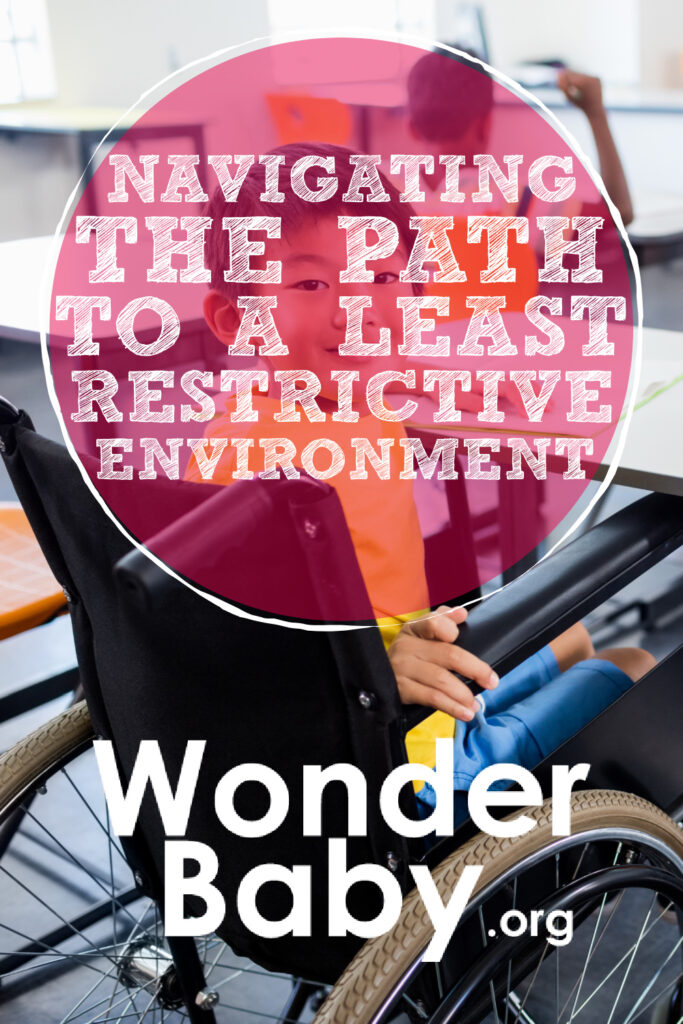
Related Posts

Eye Conditions and Syndromes, Visual Impairment
Neuralink Announces Plans to Restore Sight to the Blind with Brain Chip
Elon Musk’s company Neuralink has announced plans to begin human trials of its new “Blindsight” brain chip by the end of 2025.

IEPs
What Should I Bring to My Child’s First IEP Meeting?
Prepare for your child's first IEP meeting with confidence! Discover exactly what documents to bring, including educational records, medical info, and questions to ask.

Special Needs
5 Spring Cleaning Tips for Families of Children with Disabilities
Spring cleaning is an opportunity to create a more accessible, organized, and supportive space for your child with disabilities. Declutter, deep clean, and refresh!